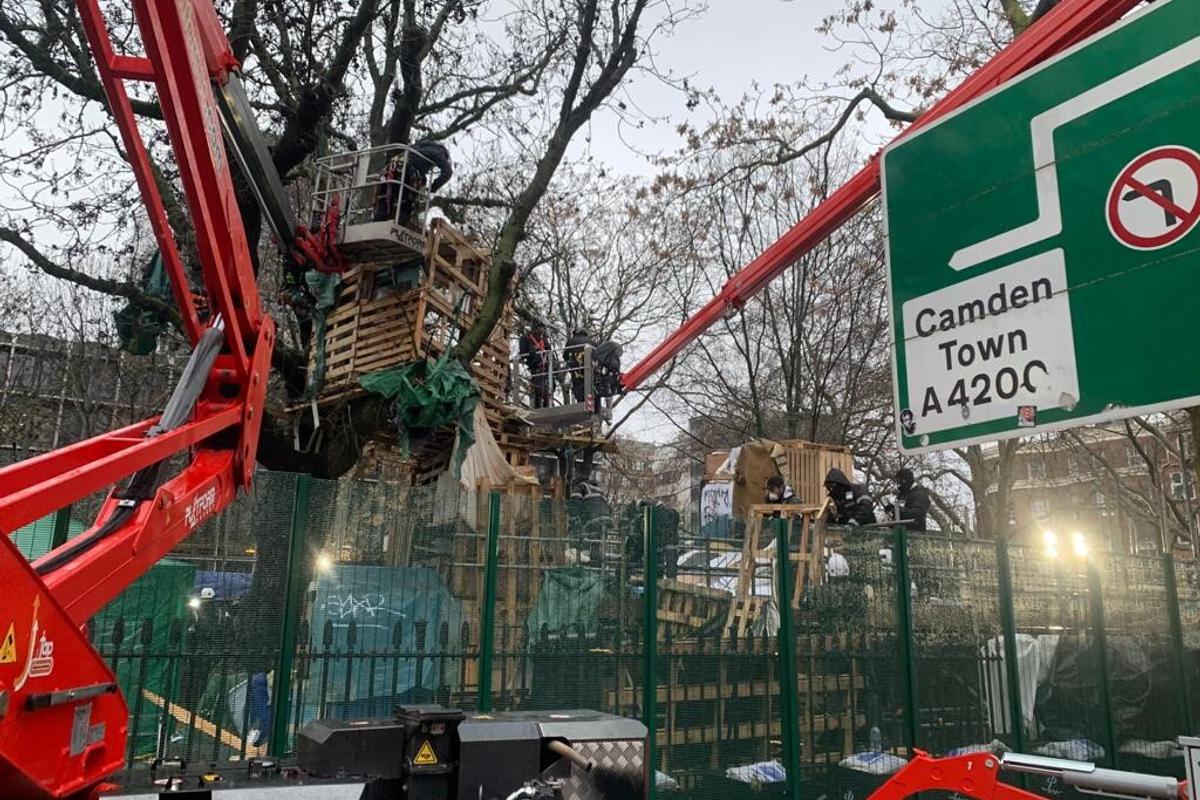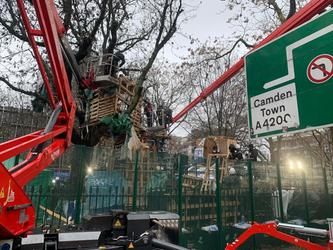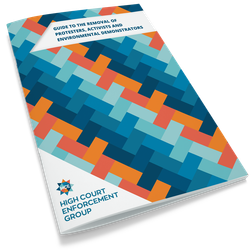
PDF 201.04KB

During the operation, there were two legal claims brought by Dr Ian “Larch” Maxey, one of the protesters occupying the tunnel. In this article, we will take you through these and the decisions made in relation to the continuance of the operation and Mrs Justice Steyn’s rulings with regards to our work.
On 1st February 2021, Dr Maxey brought a claim which was heard by Mr. justice Knowles CBE. Maxey asked for HS2, London Fire Brigade and High Court Enforcement Group (our parent company) to stop operations and implement an exclusion zone.
Justice Knowles refused and made an order. Part 4 of this order told Dr Maxey to:
Dr Maxey didn’t comply with the order and said, via his counsel, that he would not comply.
Just over a week later, on 9th February 2021, Dr Maxey raised another claim, which was heard by Mrs. justice Steyn DBE. The defendant was HS2, with three interested parties: the Secretary of State for Transport, the London Fire Commissioner and High Court Enforcement Group.
Maxey asked for the following:
He also asked for HS2 to allow Peter Faulding, who was acting as a witness for Dr Maxey, to access the site with three colleagues and for HS2 to disclose their risk assessments, operation plans and minutes of meetings.
Maxey also wanted Part 4 of the 1st February order set aside. HS2 requested that a penal notice be added if Part 4 were not complied with.
Dr Maxey said that the operation was putting the protesters at risk and was blocking his freedom of expression by exposing him to the risk of injury or death and depriving him of sleep under the European Convention of Human Rights (ECHR).
Peter Faulding, whose company, Specialist Group International Ltd, provides search and rescue services, was acting as a witness for the protesters.
Justice Steyn noted that Faulding failed in his bid to win the contract to undertake protester removal operations for HS2 and said that his experience of removing protesters from tunnels was, in fact, gained between 1995 and 2001 and further that all the references he supplied were more than 20 years old.
Faulding raised a number of concerns about the operation:
Let’s look at each of these concerns in more detail and see what ruling Justice Steyn made on each.
Justice Steyn disagreed with this contention, based on the “powerful evidence” given by HS2 and David Asker of HCE Group.
David Asker, from the National Eviction Team, replied that they always knew there was a possibility of tunnels. Planning started in early December and the 167-page operational plan submitted late December 2020 included 32 detailed risk assessments, risk and method statements for each stage. And contingency planning for dealing safely with tunnels.
There was rigorous approval by HS2 and their contractors before work commenced and the Health and Safety Executive (HSE) was also involved in this process.
David Asker stated that he had put an exclusion zone in place when the tunnels were identified and that there was no machinery in the exclusion zone. Justice Steyn determined that Maxey’s application was redundant.
Faulding said that they were no multi-gas detectors in the tunnel and oxygen levels were not being monitored. He said the air compressor being used may not have a valid certificate of service and there was no back up air compressor.
David Asker and HS2 gave evidence that there was, and always had been, monitoring of oxygen levels in the tunnel. There were two breathing air compressors with compressed air hoses and oxygen and gas detectors had been provided, with instructions to the protesters to not obstruct the filter. Cadent Gas also attended to check whether there was any gas seepage from the mains pipes in Euston Road.
Oxygen levels had remained at a safe level and the breathing air compressors were hired from a specialist company with all necessary documentation provided. He confirmed that there was indeed a back-up air compressor on site.
Faulding criticised the National Eviction Team’s work to shore up the protesters’ shaft.
David Asker said this was done to stop it from collapsing, which was a very real possibility, and then the team excavated a more suitable shaft to gain access to the tunnel to remove protesters. These works were carried out in accordance with designs and working methods approved under the CDM regulations to the Health and Safety at Work Act 1974.
Justice Steyn said she could not criticise the National Eviction Team’s approach.
David Asker said that the protesters clearly had access to a viable mobile signal since they were constantly using the Internet from their Smartphones to release video footage, to give interviews from the tunnels and to speak to Faulding and to their legal representative. He said that if the protesters needed additional communications equipment, this would be supplied.
The representative from HS2 added that hard-wired communications was best practice in 1996. In 2021, in central London with 5G internet connectivity, he said that the protesters were in fact able to broadcast to the world from their tunnel.
Justice Steyn didn’t find any issue with our approach to communications.
David Asker said that they removed these protesters as a priority to make the area occupied by the tunnels as safe as possible. Leaving the protesters in the tunnel was not a reasonable or safe option. Justice Steyn did not support Faulding’s claim.
David Asker said that they had not compromised it and that rainwater was being collected to an area outside the exclusion zone. He said that the “whole structure of the tunnel complex is inadequate.” Justice Steyn said that HS2 had evidence that this was being managed properly but that Faulding had no knowledge of what had been done.
David Asker said that the enforcement agent was trying to fill a lock with expanding foam and the protester tried to grab his legs, so he got out as quickly as possible as he was worried that protesters might put restraints on his legs to prevent him from leaving.
Justice Steyn ruled that “there is no realistic prospect of this incident providing any foundation for a breach of articles 2, 3 or 10”.
As part of his claim, Dr Maxey wanted the supply of water and food and the removal of human waste. Justice Steyn said that HS2 has no obligation to supply food or water and that the defendant was already removing human waste.
Justice Steyn said there was no realistic prospect of the court finding that the defendant was breaching their duty. She stated:
“The claimant has not come close to establishing a strong enough case to justify the court stopping the operations to remove those who are in the tunnel, given the compelling evidence as to how dangerous it is for them to remain there.”
In considering the application for Faulding and three of his team to enter the tunnel to provide expert evidence, Justice Steyn said that asking permission for four more people to go into the tunnel and place an extra burden on the defendants of protecting more lives is “extraordinary”.
She also commented that she thought that the site visit and documentation disclosure request was a “fishing expedition” and rejected it.
Finally, with regards to Part 4 of the 1st February judgment, Justice Steyn dismissed Dr Maxey’s application to set aside, but did add the penal notice requested by HS2.
On 26th February 2021, we safely removed the final protester from the tunnels they had dug and occupied under Euston Square Gardens since 27th January 2021.
Given the dangerous nature of the tunnel construction, we were very pleased that, due to our rigorous planning and decades of expertise, no one was injured during the operation.

